
Zen Serenity at World Peace Pagoda, Pokhara
Discover tranquility at World Peace Pagoda in Pokhara, Nepal. Enjoy panoramic views, spiritual solace, and a unique cultural experience amidst nature's beauty.
Perched on Anadu Hill, overlooking the serene Phewa Lake, the World Peace Pagoda in Pokhara stands as a symbol of tranquility and unity. Built by Buddhist monks from the Japanese Nipponzan-Myohoji organization, the pagoda is one of the 80 peace pagodas constructed around the world to promote peace. This gleaming white monument not only offers spiritual solace but also provides breathtaking panoramic views of the Annapurna range and the valley below. The journey to the pagoda is an adventure in itself. You can either take a boat ride across Phewa Lake and then hike up through lush forests, or opt for a more direct route by road. Along the way, you’ll encounter a variety of flora and fauna, making the trek a delightful experience for nature lovers. Upon reaching the summit, you'll be greeted by the serene ambiance of the pagoda grounds, adorned with colorful prayer flags and meticulously maintained gardens. Visitors often find a sense of inner peace while exploring the pagoda and its surroundings. The site is not only a place of worship but also a hub of cultural exchange, where you can learn about Buddhist traditions and local customs. Whether you’re meditating by the pagoda, capturing the stunning landscapes with your camera, or simply soaking in the tranquil atmosphere, the World Peace Pagoda offers a unique and enriching experience for every traveler.
Local tips in World Peace Pagoda
- Visit early in the morning or late afternoon to avoid crowds and catch the best light for photography.
- Wear comfortable shoes suitable for hiking if you plan to trek up the hill.
- Carry water and snacks, as there are limited facilities on the way up.
- Respect the local customs and maintain silence in the pagoda area to preserve the peaceful environment.
- Combine your visit with a boat ride on Phewa Lake for a complete experience.
Zen Serenity at World Peace Pagoda, Pokhara
Perched on Anadu Hill, overlooking the serene Phewa Lake, the World Peace Pagoda in Pokhara stands as a symbol of tranquility and unity. Built by Buddhist monks from the Japanese Nipponzan-Myohoji organization, the pagoda is one of the 80 peace pagodas constructed around the world to promote peace. This gleaming white monument not only offers spiritual solace but also provides breathtaking panoramic views of the Annapurna range and the valley below. The journey to the pagoda is an adventure in itself. You can either take a boat ride across Phewa Lake and then hike up through lush forests, or opt for a more direct route by road. Along the way, you’ll encounter a variety of flora and fauna, making the trek a delightful experience for nature lovers. Upon reaching the summit, you'll be greeted by the serene ambiance of the pagoda grounds, adorned with colorful prayer flags and meticulously maintained gardens. Visitors often find a sense of inner peace while exploring the pagoda and its surroundings. The site is not only a place of worship but also a hub of cultural exchange, where you can learn about Buddhist traditions and local customs. Whether you’re meditating by the pagoda, capturing the stunning landscapes with your camera, or simply soaking in the tranquil atmosphere, the World Peace Pagoda offers a unique and enriching experience for every traveler.
Iconic landmarks you can’t miss
World Peace Pagoda
Explore the World Peace Pagoda in Pokhara, a serene Buddhist stupa with breathtaking views and a symbol of peace amidst stunning natural beauty.

Stupa Walkway, Nepal
Discover tranquility at Stupa Walkway in Pokhara, Nepal. Experience the beauty of Buddhism amid stunning mountain views and vibrant prayer flags.

View point / resting place
Discover the tranquil beauty of Pokhara's viewpoint—your perfect respite with stunning mountain views and lush landscapes.

Peepal chautara
Discover Peepal Chautara in Pokhara, a serene hiking area offering stunning views and a peaceful resting point on the trail to World Peace Pagoda.

Viewpoint
Experience the stunning Himalayan views and serene landscapes at the breathtaking Pokhara Viewpoint, a must-visit destination for every traveler.

Puspa Garden
Discover the tranquil beauty of Puspa Garden in Pokhara, a serene oasis filled with vibrant flora and breathtaking landscapes.
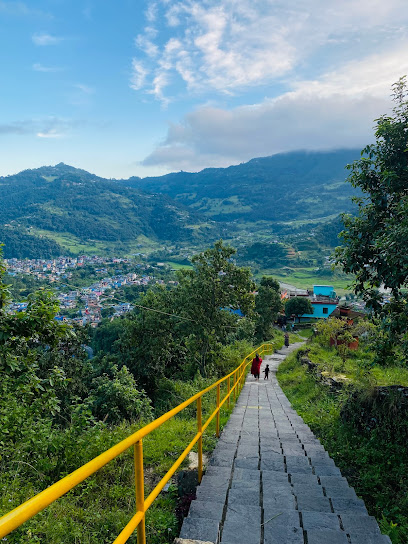
Devkota Kul Mandir (देवकाेटा कुलायनकाे थान)
Explore the tranquil Devkota Kul Mandir in Pokhara, a harmonious blend of spirituality and stunning natural beauty.

Way to stupa
Explore the breathtaking Way to Stupa in Pokhara, a serene hiking area offering stunning mountain views and spiritual tranquility amidst nature.

Razan bhujel
Experience the breathtaking beauty and rich culture of Razan Bhujel, a must-visit tourist attraction in Pokhara, Nepal.

World Peace Pagoda Street
Experience tranquility and breathtaking views at the World Peace Pagoda in Pokhara, a symbol of peace and a must-visit for every traveler.

Unmissable attractions to see
Devi's Fall Pokhara.
Experience the breathtaking beauty of Devi's Fall, a must-visit natural wonder in Pokhara, Nepal, where nature and tranquility harmoniously blend.
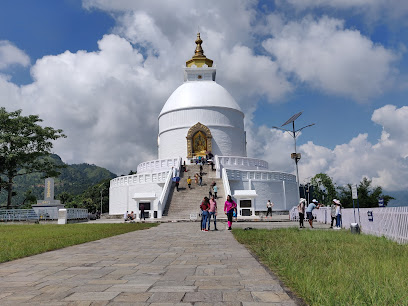
Pokhara Lakeside
Experience the breathtaking beauty and vibrant culture of Pokhara Lakeside, a perfect blend of adventure and tranquility in Nepal.
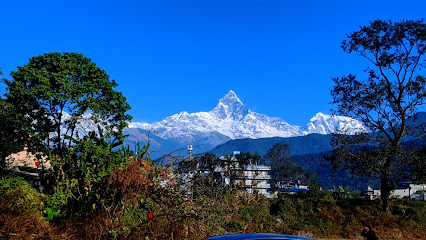
World Peace Pagoda
Experience peace and breathtaking views at the World Peace Pagoda, a stunning Buddhist temple in Pokhara, Nepal.
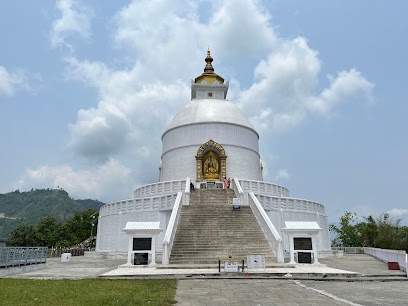
Pumdikot Religious Area
Discover the spiritual serenity and breathtaking views at Pumdikot Religious Area in Pokhara, a Hindu temple and a must-visit tourist attraction.

Sarangkot Sunrise Pokhara
Experience the breathtaking sunrise over the Annapurna range at Sarangkot, a must-visit attraction in Pokhara, Nepal.
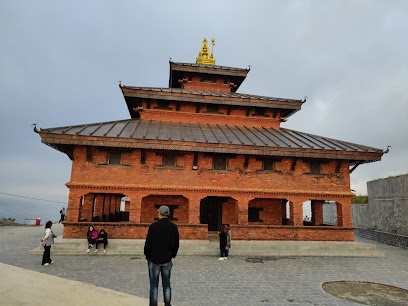
Gupteshwor Mahadev Cave
Explore the sacred Gupteshwor Mahadev Cave in Pokhara, a mesmerizing natural wonder filled with stunning formations and spiritual significance.
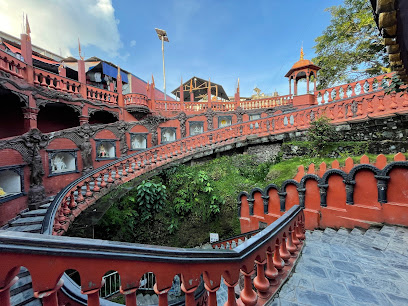
View point / resting place
Discover breathtaking views and tranquility at this serene viewpoint in Pokhara, a must-visit for all nature lovers.
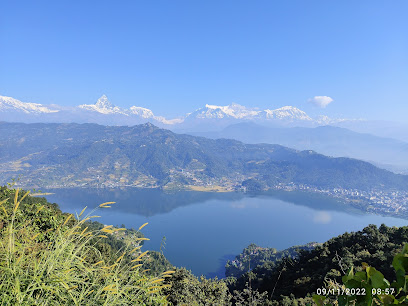
Pokhara Dhungapani
Explore the serene landscapes and breathtaking views at Pokhara Dhungapani, the ultimate escape in Nepal's natural paradise.

Razan bhujel
Explore Razan Bhujel, a serene tourist attraction in Pokhara, where stunning landscapes and vibrant local culture create unforgettable experiences.

World Peace Pagoda Street
Experience tranquility and breathtaking views at the World Peace Pagoda in Pokhara, a symbol of peace and spiritual harmony.
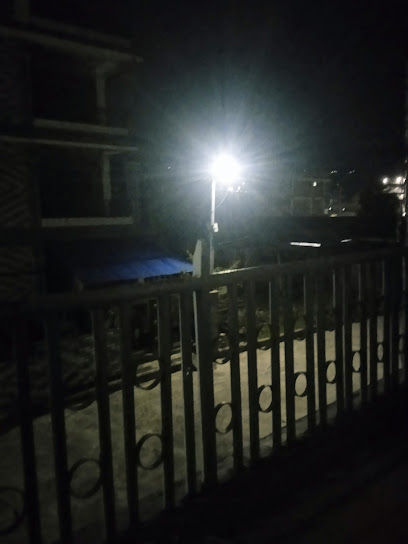
Essential places to dine
Caffe Concerto
Experience authentic Italian cuisine at Caffe Concerto in Pokhara, where every dish tells a story amidst breathtaking Himalayan views.

Mo2'S Delights Pokhara ( Now MoM's Café & Bar)
Experience authentic Nepalese flavors at MoM's Café & Bar in Pokhara - where every meal tells a story.

Potala Tibetan Restaurant
Discover the rich flavors of Tibet at Potala Tibetan Restaurant in Pokhara – a culinary journey you won't want to miss!

Peace Dragon Lodge And Restaurant
Experience tranquility and delectable dining at Peace Dragon Lodge & Restaurant in beautiful Pokhara, Nepal - your perfect getaway.

Sukunda
Discover Sukunda in Pokhara – where authentic Nepali flavors meet breathtaking views near World Peace Pagoda.

Kusum restaurant
Discover local flavors at Kusum Restaurant near World Peace Pagoda in Pokhara, offering breathtaking views and delightful cuisine.

Typical Restaurant
Discover authentic Nepali cuisine at Typical Restaurant on Stupa Walkway in Pokhara - a must-visit culinary gem!

stupa momo
Experience authentic Nepalese flavors at Stupa Momo in Pokhara - home to delicious momos and warm hospitality.

G.N.S Restaurant
Discover authentic Nepali cuisine at G.N.S Restaurant in Pokhara, offering stunning views near the World Peace Stupa.

Santoshi Restaurant
Experience authentic Nepali cuisine at Santoshi Restaurant in Pokhara, where flavors meet warm hospitality amidst stunning natural beauty.

Markets, malls and hidden boutiques
Pokhara Trade Mall
Discover the vibrant shopping scene at Pokhara Trade Mall, where local culture and unique finds await you in the heart of Pokhara.

Saleways Departmental Stores
Experience the essence of Pokhara shopping at Saleways Departmental Stores - where local culture meets everyday essentials.
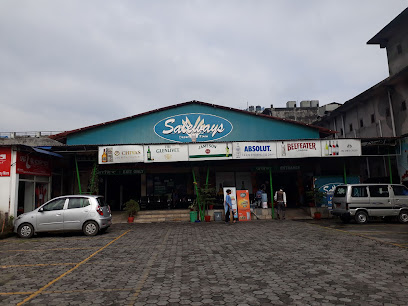
Himalayan Threads Handicrafts Shop
Explore the vibrant world of Nepalese handicrafts at Himalayan Threads in Pokhara, where every piece tells a story of artistry and tradition.

Tibetan Mini Market
Discover the vibrant Tibetan Mini Market in Pokhara, a cultural gem filled with handcrafted treasures and a unique shopping experience.

klod Fashion Exquisite
Explore Klod Fashion Exquisite in Pokhara for a unique blend of modern style and traditional elegance in clothing and accessories.

Amala's Tibetan Gift Corner
Discover the charm of Tibetan craftsmanship at Amala's Tibetan Gift Corner in Pokhara, a must-visit for unique souvenirs and cultural insights.

Manju Shree massage Centre and Gift Shop
Experience ultimate relaxation and authentic Nepali gifts at Manju Shree Massage Centre and Gift Shop in the heart of Pokhara.

Thaman Art Galery
Discover authentic Nepali art and unique souvenirs at Thaman Art Gallery in Pokhara, a cultural gem showcasing local talent and craftsmanship.

New Grand Art Inn Pashmina Store
Discover exquisite pashmina craftsmanship in the heart of Pokhara's scenic Lakeside area, perfect for unique souvenirs and cultural experiences.

Nepali Creation Souvenirs Shop
Explore the rich craftsmanship of Nepal at Nepali Creation Souvenirs Shop, your destination for unique handcrafted gifts in Pokhara.

Essential bars & hidden hideouts
Busy Bee Cafe
Discover the lively spirit of Busy Bee Cafe, where delicious food, refreshing drinks, and live music create an unforgettable atmosphere in Pokhara.

Krazy Gecko
Discover the vibrant nightlife of Pokhara at Krazy Gecko, a lively bar and restaurant offering great food, drinks, and stunning views.

Paradiso Pokhara
Discover the vibrant atmosphere of Paradiso Pokhara, where delicious food, crafted cocktails, and live music come together for a perfect night out.

Irish Pub
Discover the vibrant atmosphere of the Irish Pub in Pokhara, where delicious food and lively entertainment meet stunning lakeside views.

Bamboo Bar Cafe
Discover Bamboo Bar Cafe in Pokhara - a tranquil spot for delightful cuisine, refreshing cocktails, and breathtaking lakeside views.

The Boss Restaurant
Experience the best of Pokhara's culinary scene at The Boss Restaurant, offering exquisite barbecue and steak dishes with stunning lakeside views.

Longest Bar
Experience the vibrant nightlife at The Longest Bar in Pokhara, where delicious drinks and lively atmosphere await you.

Oxygen Lounge Bar
Discover the perfect blend of relaxation and entertainment at Oxygen Lounge Bar in Pokhara, where scenic views meet vibrant nightlife.

Thanti Snacking Bar
Discover the perfect blend of relaxation and local flavors at Thanti Snacking Bar in Pokhara, a must-visit destination for every traveler.

The Putali Bar
Experience the vibrant atmosphere and stunning views at The Putali Bar in Pokhara, the perfect spot for relaxation and socializing.

Local Phrases
-
- Helloनमस्ते
[namaste] - Goodbyeफेरी भेटौं
[feri bhetau] - Yesहो
[ho] - Noहोइन
[hoin] - Please/You're welcomeकृपया/स्वागत छ
[kripya/swagat cha] - Thank youधन्यवाद
[dhanyabad] - Excuse me/Sorryमाफ गर्नुहोस्
[maaf garnuhos] - How are you?तपाईंलाई कस्तो छ?
[tapailai kasto cha?] - Fine. And you?ठिकै। तपाईंलाई?
[thikai. tapailai?] - Do you speak English?तपाईंले अंग्रेजी बोल्नु हुन्छ?
[tapailai angreji bolnu huncha?] - I don't understandमैले सम्झिन
[maile samjhina]
- Helloनमस्ते
-
- I'd like to see the menu, pleaseकृपया मेनु हेर्न चाहन्छु
[kripya menu hern chahanchu] - I don't eat meatम मासु खाँदैन
[ma masu khandain] - Cheers!चियर्स!
[cheers!] - I would like to pay, pleaseकृपया भुक्तान गर्न चाहन्छु
[kripya bhuktan garn chahanchu]
- I'd like to see the menu, pleaseकृपया मेनु हेर्न चाहन्छु
-
- Help!मदत!
[madat!] - Go away!जानु भर्!
[janu bhar!] - Call the Police!पुलिसलाई बोलाउनुहोस्!
[polis lai bolaunu hos!] - Call a doctor!डाक्टरलाई बोलाउनुहोस्!
[daktar lai bolaunu hos!] - I'm lostम गुमाएको छु
[ma gumaeko chu] - I'm illमलाई बिरामी छ
[malai birami cha]
- Help!मदत!
-
- I'd like to buy...म किन्न चाहन्छु...
[ma kinn chahanchu...] - I'm just lookingम सिर्जना गरिरहेको छु
[ma sirjana gari raheko chu] - How much is it?यसको मूल्य कति हो?
[yasko mulya kati ho?] - That's too expensiveयो धेरै महँगो छ
[yo dherai mahango cha] - Can you lower the price?के तपाईं मुल्य हाल्न सक्छन्?
[ke tapailai mulya haln sakchan?]
- I'd like to buy...म किन्न चाहन्छु...
-
- What time is it?कति बज्यो?
[kati bajyo?] - It's one o'clockएक बजे छ
[ek baje cha] - Half past (10)दस बज्यो नजिकै
[das bajyo najikai] - Morningबिहान
[bihan] - Afternoonदिउँसो
[diunso] - Eveningसाँझ
[sajh] - Yesterdayहिजो
[hijo] - Todayआज
[aaj] - Tomorrowभोलि
[bholi] - 1एक
[ek] - 2दुई
[dui] - 3तीन
[tin] - 4चार
[char] - 5पाँच
[pach] - 6छ
[cha] - 7सात
[sat] - 8आठ
[aath] - 9नौ
[nau] - 10दस
[das]
- What time is it?कति बज्यो?
-
- Where's a/the...?...कहाँ छ?
[...kaha cha?] - What's the address?ठेगाना के हो?
[thegana ke ho?] - Can you show me (on the map)?के तपाईं मलाई देखाउन सक्छनुहुन्छ? (नक्सामा)
[ke tapailai dekhau sakhnuhuncha? (naksama)] - When's the next (bus)?अर्को (बस) कहिले छ?
[arko (bas) kahile cha?] - A ticket (to ....)एक टिकट (.... सम्म)
[ek ticket (.... samma)]
- Where's a/the...?...कहाँ छ?
History of World Peace Pagoda
-
The World Peace Pagoda in Pokhara was built as part of a global movement initiated by Buddhist monk Nichidatsu Fujii in the 1940s. The Pagoda was constructed to promote peace and to celebrate the spirit of Buddhism. It was completed in 1990, symbolizing the aspiration for peace among all nations and peoples.
-
The Pagoda is a stunning example of traditional Buddhist architecture, featuring a striking white stupa that stands majestically on a hilltop overlooking Phewa Lake. The design is inspired by the ancient stupas of the Kathmandu Valley, reflecting a blend of local and international Buddhist architectural styles.
-
Since its completion, the World Peace Pagoda has become a significant pilgrimage site for Buddhists from around the world. Its serene environment and panoramic views of the Annapurna Mountain range attract not only spiritual seekers but also tourists who come to experience its tranquility and beauty.
-
The Pagoda serves as a focal point for cultural events and festivals in Pokhara. Local communities engage in various ceremonies and celebrations here, fostering a sense of unity and harmony among diverse groups. It symbolizes the commitment to peace and coexistence in the region, especially in the context of Nepal's diverse ethnic mosaic.
-
In recent years, the area surrounding the World Peace Pagoda has been involved in various environmental conservation efforts. Recognizing the importance of preserving the natural beauty of Pokhara, local organizations and the community have implemented initiatives aimed at protecting the ecosystem and promoting sustainable tourism.
World Peace Pagoda Essentials
-
World Peace Pagoda is located approximately 8 kilometers from Pokhara's Lakeside area. The most common way to reach it is by taking a taxi, which will take about 30 minutes. Alternatively, you can hire a bicycle or scooter from Lakeside and ride to the base of the hill. For those looking for a more immersive experience, a hike from the Lakeside area can take around 1 to 2 hours depending on your pace. There are also local buses that run to the nearby Pumdi Bhumdi area, from where you can start your hike.
-
The area around the World Peace Pagoda is best explored on foot, as it provides stunning views and a close-up experience of the surroundings. While there are no trains or extensive public transport options, local taxis and bicycle rentals are available in Pokhara. If you're feeling adventurous, consider renting a scooter for a faster way to navigate around the larger Pokhara area.
-
World Peace Pagoda is generally a safe area for tourists. However, it's wise to remain cautious, especially in less populated areas after dark. Petty crimes like pickpocketing can occur in crowded spots, so keep your belongings secure. Avoid areas known for nightlife if you are alone at night, and be mindful of your surroundings while hiking.
-
In case of an emergency, dial 100 for police assistance or 102 for ambulance services in Nepal. It is advisable to have travel insurance that covers medical emergencies. For minor health issues, there are pharmacies in Pokhara where you can purchase over-the-counter medications. The nearest hospital is in Lakeside, which is approximately a 30-minute drive from the Pagoda.
-
Fashion: Do dress modestly, especially at the Pagoda and during your hike. Avoid wearing revealing clothing. Religion: Do respect local customs and traditions, including removing shoes before entering religious sites. Public Transport: Do be courteous to fellow passengers and offer your seat to the elderly. Don't eat or drink on public transport. Greetings: Do greet locals with a friendly 'Namaste' and a slight bow. Eating & Drinking: Do try local dishes at nearby eateries and drink plenty of water; don't refuse food if offered, as it may be considered impolite.
-
To experience World Peace Pagoda like a local, take some time to interact with the local community and learn about their lifestyle. Visit early in the morning or late afternoon to enjoy the serene atmosphere and catch breathtaking views of the sunrise or sunset over the Annapurna Range. Bring a small notebook and pen; locals often enjoy sharing stories about the history and significance of the Pagoda. Don’t forget to explore the surrounding trails and enjoy the quietude away from the more tourist-heavy areas.
Nearby Cities to World Peace Pagoda
-
Things To Do in Bandipur
-
Things To Do in Gorkha
-
Things To Do in Chitwan
-
Things To Do in Lumbini
-
Things To Do in Kathmandu
-
Things To Do in Patan
-
Things To Do in Bhaktapur
-
Things To Do in Nagarkot
-
Things To Do in Namche Bazaar
-
Things To Do in Patna
-
Things To Do in Lucknow
-
Things To Do in Varanasi
-
Things To Do in Kanpur
-
Things To Do in Darjeeling
-
Things To Do in Siliguri








